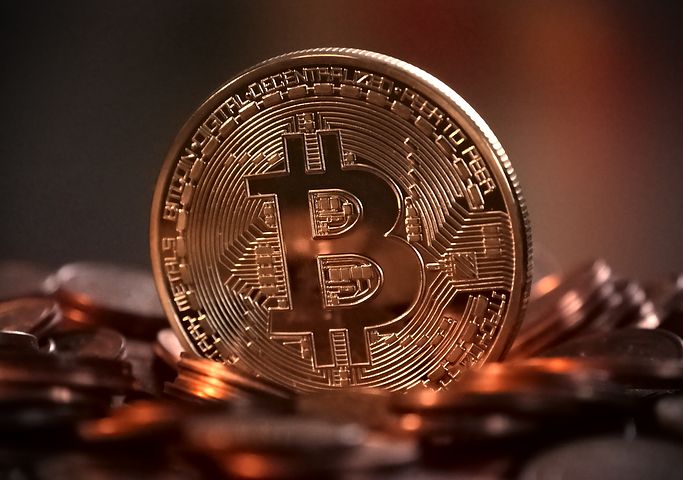Contents
Bitcoin is a digital currency which operates free of any central control or the oversight of banks or governments. Instead it relies on peer-to-peer software and cryptography.
A public ledger records all bitcoin transactions and copies are held on servers around the world. Anyone with a spare computer can set up one of these servers, known as a node. Consensus on who owns which coins is reached cryptographically across these nodes rather than relying on a central source of trust like a bank.
Every transaction is publicly broadcast to the network and shared from node to node. Every ten minutes or so these transactions are collected together by miners into a group called a block and added permanently to the blockchain. This is the definitive account book of bitcoin.
In much the same way you would keep traditional coins in a physical wallet, virtual currencies are held in digital wallets and can be accessed from client software or a range of online and hardware tools.
Bitcoins can currently be subdivided by seven decimal places: a thousandth of a bitcoin is known as a milli and a hundred millionth of a bitcoin is known as a satoshi.
In truth there is no such thing as a bitcoin or a wallet, just agreement among the network about ownership of a coin. A private key is used to prove ownership of funds to the network when making a transaction. A person could simply memorise their private key and need nothing else to retrieve or spend their virtual cash, a concept which is known as a “brain wallet”.
Can bitcoin be converted to cash?
Bitcoin can be exchanged for cash just like any asset. There are numerous cryptocurrency exchanges online where people can do this but transactions can also be carried out in person or over any communications platform, allowing even small businesses to accept bitcoin. There is no official mechanism built into bitcoin to convert to another currency.
Nothing innately important supports the bitcoin network. Be that as it may, this is valid for large numbers of the world’s most steady public monetary forms since leaving the highest quality level, for example, the US dollar and UK pound.
What is the reason for bitcoin?
Bitcoin was made as a way for individuals to send cash over the web. The computerized money was expected to give an elective installment framework that would work liberated from focal control yet in any case be utilized very much like customary monetary forms.
Are bitcoins safe?
The cryptography behind bitcoin depends on the SHA-256 calculation planned by the US National Security Agency. Breaking this is, in every practical sense, unimaginable as there are more conceivable private keys that would need to be tried (2256) than there are molecules in the universe (assessed to be somewhere close to 1078 to 1082).
There have been a few high profile instances of bitcoin trades being hacked and reserves being taken, yet these administrations perpetually put away the computerized money for clients. What was hacked in these cases was the site and not the bitcoin network.
In principle assuming an assailant could handle the greater part of all the bitcoin hubs in presence then they could make an agreement that they possessed all bitcoin, and install that into the blockchain. In any case, as the quantity of hubs develops this turns out to be less pragmatic.
A practical issue is that bitcoin works with practically no focal power. Along these lines, anybody making a blunder with an exchange on their wallet has no response. Assuming you unintentionally send bitcoins to some unacceptable individual or lose your secret phrase there is no one to go to.
Obviously, the possible appearance of functional quantum registering could break everything. Much cryptography depends on numerical computations that are incredibly difficult for current PCs to do, yet quantum PCs work distinctively and might have the option to execute them in a negligible part of a second.
What is bitcoin mining?
Mining is the cycle that keeps up with the bitcoin network and furthermore the way in which new coins are brought into reality.
All exchanges are freely communicated on the organization and excavators group enormous assortments of exchanges together into blocks by finishing a cryptographic computation that is incredibly difficult to produce however extremely simple to check. The principal excavator to settle the following square transmissions it to the organization and whenever demonstrated right is added to the blockchain. That digger is then compensated with a measure of recently made bitcoin.
Intrinsic in the bitcoin programming is a hard restriction of 21 million coins. There won’t ever be more than that in presence. The complete number of coins will be available for use by 2140. Generally at regular intervals the product makes it two times as difficult to mine bitcoin by diminishing the size of the prizes.
When bitcoin was first sent off it was feasible to promptly mine a coin utilizing even a fundamental PC. Presently it requires rooms loaded with strong hardware, frequently top of the line designs cards that are adroit at working through the estimations, which when joined with an unstable bitcoin cost can now and then make mining more costly than it is worth.
Diggers likewise pick which exchanges to package into a square, so expenses of a changing sum are added by the source as a motivating force. When all coins have been mined, these charges will go on as a motivation for mining to proceed. This is required as it gives the foundation of the Bitcoin organization.
Who designed bitcoin?
In 2008 the area name .organization was purchased and a scholarly white paper named Bitcoin: A Peer-to-Peer Electronic Cash System was transferred. It set out the hypothesis and plan of a framework for a computerized money liberated from control from any association or government.
The creator, going by the name Satoshi Nakamoto, stated: “The root issue with regular monetary standards is all the trust that is expected to make it work. The national bank should be relied upon not to spoil the money, however the historical backdrop of government issued types of money is loaded with breaks of that trust.”
The next year the product depicted in the paper was done and delivered openly, sending off the bitcoin network on 9 January 2009.
Nakamoto kept chipping away at the venture with different designers until 2010 when the person in question pulled out from the undertaking and passed on it to its own gadgets. The genuine personality of Nakamoto has never been uncovered and they have not disclosed any proclamation in years.
Presently the product is open source, implying that anybody can view, use or add to the code for nothing. Many organizations and associations work to work on the product, including MIT.
What are the issues with bitcoin?
There have been a few reactions of bitcoin, including that the mining framework is immensely energy hungry. The University of Cambridge has an internet based number cruncher that tracks energy utilization and toward the start of 2021 it was assessed to use more than 100 terawatt hours yearly. For point of view, in 2016 the United Kingdom utilized 304 terawatt hours altogether.
The cryptographic money has likewise been connected to guiltiness, with pundits calling attention to it being an ideal method for making bootleg market exchanges. Truly, cash has given this capacity to hundreds of years, and the public record of bitcoin may really be a device for regulation implementation.

